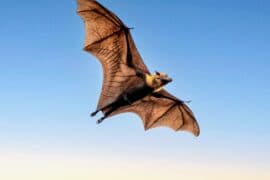Florida mouse
(Podomys floridanus)

Description
The Florida mouse (Podomys floridanus) is a species of rodent in the family Cricetidae. It is the only species in the genus Podomys, which is the only mammal genus endemic to Florida. The Florida mouse (also known as the big-eared deermouse, the Florida deermouse, and the gopher mouse) is found only in a limited area in central peninsular Florida and in one small area in the Florida panhandle. The mouse inhabits some of Florida's hottest and driest areas in the high pinelands, sandhills, flatlands, and coastal scrub. The mouse is an omnivore, measures 195 mm (7.7 in) in total length, has relatively large ears, and displays brown to orange upperparts and white underparts. The mouse breeds throughout the year, and raises its two or three young per litter in the nesting chambers and passages it constructs in the burrow of the gopher tortoise (Gopherus polyphemus). Real estate development and a decline in the gopher tortoise population threaten the mouse's future. The species is listed as Near Threatened by the IUCN. The Florida mouse displays a soft and silky pelage, brown above and orange on the cheeks, shoulders, and lower sides. Underparts are white. The young are gray. The species has a skunk-like odor. The mouse has relatively large, nearly naked ears (16 mm long or more); a relatively short tail approximately 80% of total body length; and large hind feet (24 mm long or more) with five, rather than the usual six, plantar tubercles. There is no difference in appearance between males and females. The mouse looks like Peromyscus and was once placed as a monotypic subgenus in the genus Peromyscus. The greater size and distinctive coloration of Podomys floridanus distinguish it from the cotton mouse (Peromyscus gossypinus) and oldfield mouse (Peromyscus polionotus), which also occur in Florida. In 1973, a biochemical polymorphism study was conducted in four sample areas of the species. Electrophoretically demonstrable variation was found in one or more populations at 15 of 39 (38%) of the loci examined, and two and sometimes three alleles per locus were detected. At the least, the findings give an indication of the kind of genetic variation that may be found between populations within a species. The amount of variation was similar to findings in examinations of Peromyscus polionotus, Sigmodon, and Dipodomys.
Taxonomic tree:







